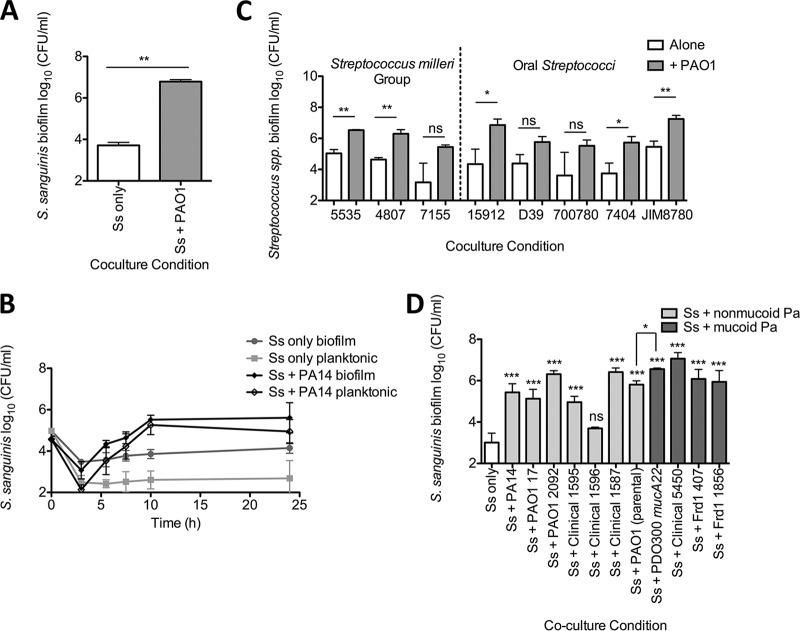FIG 1.
P. aeruginosa enhances growth of Streptococcus spp. in coculture. Coculture assays were conducted to investigate streptococcal growth when cocultured with P. aeruginosa. (A) S. sanguinis SK36 (Ss) cocultured with P. aeruginosa PAO1. (B) The coculture growth kinetics of S. sanguinis with P. aeruginosa PA14 were investigated. Each time point represents the average of three biological replicates with three technical replicates. The error bars indicate standard deviation (SD). (C) A representative group of clinical and reference Streptococcus strains were tested in coculture with P. aeruginosa PAO1 (see Fig. S3A in the supplemental material for all Streptococcus species strains tested). Each strain is denoted by its strain number: S. anginosus 5535, S. intermedius 4807, S. constellatus 7155, S. parasanguinis ATCC 15912, S. pneumoniae D39, S. peroris ATCC 700780, S. oralis 7404, and S. salivarius JIM8780. (D) S. sanguinis SK36 was tested in coculture with multiple P. aeruginosa clinical and laboratory strains. (A, C, and D) Each bar represents the average of three biological replicates with three technical replicates. The error bars indicate the standard deviation. ns, not significant; *, P < 0.05; **, P < 0.01; ***, P < 0.001 (by the paired two-tailed Student t test [A and C], repeated-measures one-way analysis of variance [ANOVA] with Tukey’s multiple-comparison posttest [D], and the paired two-tailed Student t test between Ss + PAO1 DHL08 and Ss + PAO1 mucA22 [D]). The corresponding graphs depicting P. aeruginosa growth in these assays can be found in Fig. S1 to S4 in the supplemental material.

